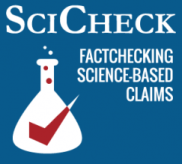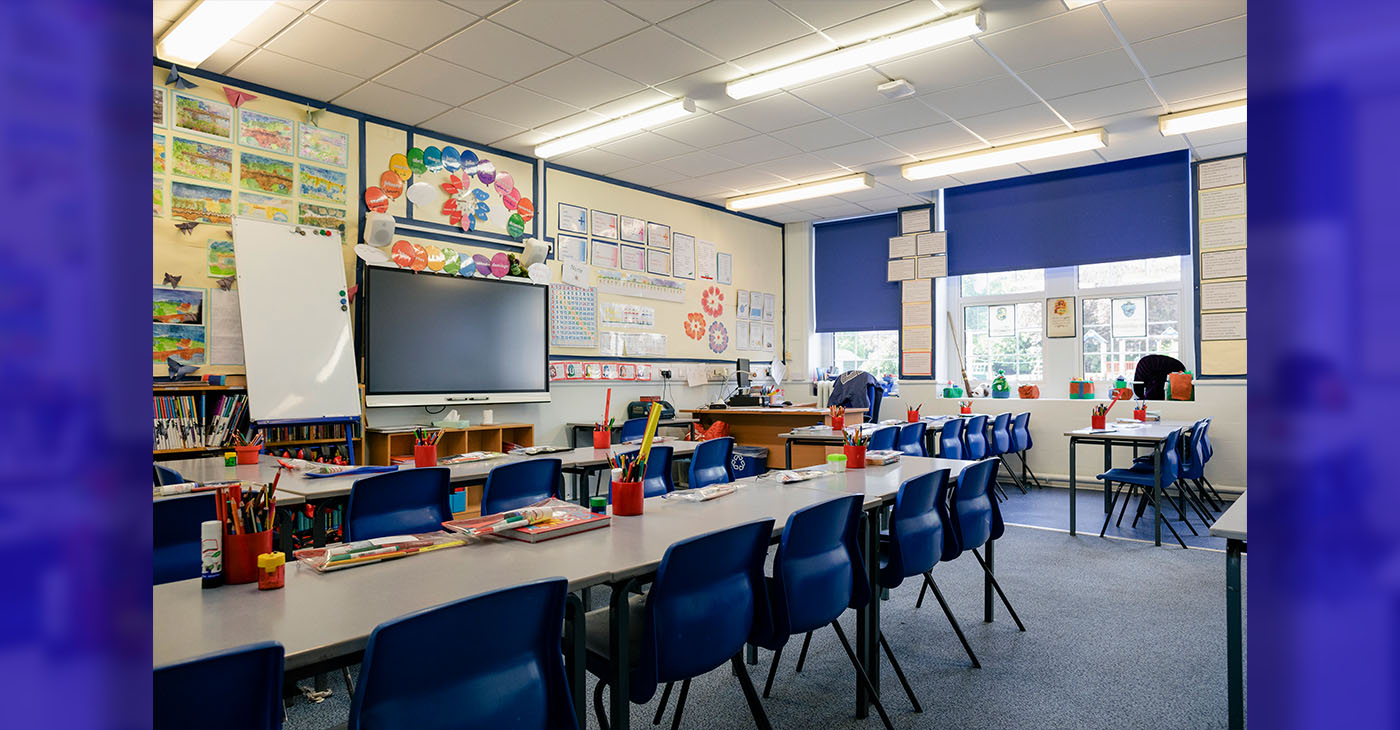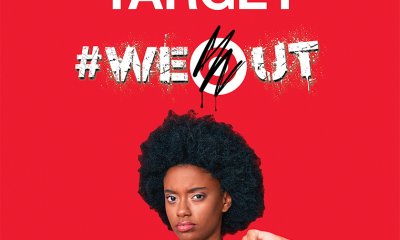If you have a question about COVID-19, email Ask SciCheck, a project of FactCheck.org, at AskSciCheck@FactCheck.org. Tell them you are a reader of the Houston Forward Times. You can read previous Ask SciCheck answers here.
#NNPA BlackPress
Q&A on Mpox
Editor’s note: This is an updated version of a Q&A we published in May 2022. Last summer saw the largest outbreak ever of mpox, the disease formerly known as monkeypox. Beginning in May 2022, cases of the disease, which is a much less dangerous relative of smallpox, began cropping up in Europe and other places outside […]
The post Q&A on Mpox first appeared on BlackPressUSA.



Editor’s note: This is an updated version of a Q&A we published in May 2022.
Last summer saw the largest outbreak ever of mpox, the disease formerly known as monkeypox.
Beginning in May 2022, cases of the disease, which is a much less dangerous relative of smallpox, began cropping up in Europe and other places outside of Central and West Africa, where mpox normally occurs sporadically.
People all over the world, primarily gay men and other men who have sex with men, developed painful and infectious lesions characteristic of the disease, and a small number of them died.

By late July 2022, the World Health Organization designated the growing outbreak a public health emergency of international concern. With more than 6,600 American cases, the U.S. also declared mpox a public health emergency in early August.
A year later, the situation has improved. Following a peak of cases in mid-August 2022, and a rapid vaccination campaign in some countries, the outbreak subsided in December. Caseloads fell from more than 1,000 a day worldwide to fewer than 75 a day by the end of the year, and from more than 400 a day in the U.S. to fewer than 10, with further declines since then. Given the relative trickle of cases, the U.S. ended its mpox emergency in January, and the WHO did so in May.
But the outbreak is not over. (Even a single case of confirmed mpox in a country is considered an outbreak.) And with warmer weather and the arrival of Pride month, health officials and other experts are concerned that mpox could be on the rise again. In mid-May, the Centers for Disease Control and Prevention assessed the risk of resurgent mpox outbreaks as “substantial.”
Here, we provide an update on the disease, and explain what makes the outbreak unusual and how people can protect themselves.
What is mpox?
Mpox is a rare disease caused by the monkeypox virus, which is in the same orthopoxvirus genus and poxvirus family as the more lethal and contagious smallpox virus, according to the CDC.
Mpox is the new name for monkeypox. In November, in recognition that the name could be stigmatizing and does not conform to current best practices for naming diseases, the World Health Organization and the CDC began using mpox to refer to the disease.
The virus name, however, remains unchanged. The International Committee on the Taxonomy of Viruses, which is responsible for determining virus names, was already considering a virus name change prior to the outbreak, but is still in the middle of the renaming process.
As with other poxvirus diseases, mpox is known for a characteristic rash and is similar in presentation to smallpox, although it will cause lymph nodes to swell and is otherwise less severe.
Mpox is a zoonosis, meaning that the virus is transmitted to people from animals. People typically become infected sporadically in the forested parts of Central and West Africa where the disease is endemic, after an interaction with an infected animal. Once infected, people can spread the virus to others, but that requires close contact.
Mpox’s former name stems from the disease’s discovery in lab monkeys in 1958, but the virus is not found exclusively or even primarily in monkeys. Many species, including rope and tree squirrels, Gambian pouched rats, and dormice, are able to harbor the virus. The natural host and source of the virus is unknown, but is likely to be a rodent.
There are two main types, or clades, of monkeypox virus: clade I, formerly known as the Congo Basin clade, and a less lethal clade II, formerly known as the Congo Basin clade (the clades were also renamed).
The 2022-2023 outbreak is due to a subtype of the less severe clade (clade IIb).
When did the outbreak begin, and how is it unusual?
The 2022-2023 mpox outbreak was first recognized in the U.K. in May 2022, but likely began earlier.
On May 13, 2022, the U.K. reported to the World Health Organization one probable and two confirmed cases of mpox from a single household, in people who had not traveled to an mpox-endemic area.
Other mpox cases were soon recognized in the U.K., other parts of Europe, and in Australia, Canada and the U.S., mainly among men who have sex with men.
Ultimately, as of June 19, mpox has spread to 112 countries, sickening nearly 88,000 people, and killing 147. In the U.S., as of June 21, more than 30,000 cases have been reported, including 43 deaths.
Both the size and geographic range of the outbreak — the largest and widest ever, by far — along with the demographics of the people affected make it unusual.
Normally, mpox is extremely rare outside of Africa, and cases are usually imported with no onward transmission. The first mpox outbreak outside of Africa occurred in the U.S. in 2003 when imported rodents from Ghana sickened pet prairie dogs, who then spread the disease to humans. That outbreak included 47 confirmed or probable cases, according to the CDC.
But with this outbreak, it’s clear that person-to-person transmission has occurred in nonendemic countries. That has never happened before on any kind of scale.
As the WHO says, “This is the first time that cases and sustained chains of transmission have been reported in countries without direct or immediate epidemiological links to areas of West or Central Africa.”
The outbreak has also been atypical because of the high concentration of cases among men who have sex with men. Of the global mpox cases with information on sex or sexual orientation, 96.2% have been in men and 84.1% have been in men who have sex with men, according to WHO data as of June 19.
That does not mean that only these individuals can contract mpox, but they are at higher risk.
What are the symptoms, and how severe is mpox?
Symptoms of mpox are reminiscent of smallpox and usually appear within a week or two after infection. The most common symptom is a rash, which may include only a single, small lesion, or may be widespread. Other symptoms include fever, headache, swollen lymph nodes, muscle aches, fatigue, chills, sore throat and respiratory symptoms.
According to the WHO, in previous outbreaks, mpox typically began with a fever, muscle aches and a sore throat before a rash would appear on the face and spread to the rest of the body, including the palms of the hands and soles of the feet.
But in the latest outbreak, many patients develop a rash first or never experience other symptoms — and the rash often remains localized. Frequently, the first lesions occur in genital areas or in or around the anus or mouth. Some patients develop rectal pain and bleeding.
The rash starts off flat, then progresses to raised and fluid- and pus-filled lesions, which then scab over and fall off. The lesions are usually painful until they crust over, when they are itchy.
Mpox is usually mild, sickening people for two to four weeks, although the disease may be painful and highly unpleasant.
Severe disease and death, however, are possible. As the WHO explains, patients can develop secondary skin infections, lose their vision, become dehydrated or malnourished, and develop sepsis or inflammation of a variety of organs.
People who are immunocompromised, including those with uncontrolled HIV, are at higher risk of more severe disease, as are pregnant people and children.
Fortunately, the virus identified in the latest cases belongs to the less lethal clade II, which has been shown to kill about 1% of people identified with the disease in Africa, according to the WHO, in contrast to clade I, which may kill up to 10%.
Statistics for the current outbreak suggest the risk of death is much lower than 1%, although this may reflect improved identification of cases, better access to health care, or differences in the number of immunosuppressed people in a population.
In the U.S., 0.14% of people with mpox have died. According to a CDC review of mpox-related deaths as of this March, “nearly all” of those who died were immunocompromised, the vast majority of whom had HIV.
How is the virus transmitted, and how contagious is it?
Mpox is initially spread to a person through an infected animal in an endemic area, which could occur through a bite or scratch or any contact with the animal’s body or lesion fluids.
Once humans are infected, they can pass the virus on to others through close contact. Often, but not always, this involves direct contact with an infected person’s skin, since the rash, including scabs and fluids from the lesions, are especially infectious.
In the 2022-2023 outbreak, transmission has primarily occurred through sexual contact. Patients have frequently reported mpox rashes on their genitals or in their mouths.
Mpox is therefore considered sexually transmissible, although there remains some debate as to whether it should be labeled a sexually transmitted infection, or STI. Although viable virus is present in semen, it’s not known if the virus can be spread through semen or vaginal fluids.
Mpox, however, does not require sexual or even physical contact with another person to spread. Because lesions in the mouth can render saliva infectious, the virus can also spread through respiratory droplets, although it takes a lot of face-to-face contact to spread the virus this way.
Contaminated clothing, bedding or other objects can also spread mpox, although the CDC considers this route of transmission to be low risk.
Because a high level of contact is usually required, mpox is not considered very contagious, in contrast to COVID-19.
People are infectious until their scabs fall off and a new layer of skin forms. According to the CDC, everyone is infectious from the time they develop symptoms, but some mpox patients may also be able to spread the disease up to four days before symptoms appear.
A small proportion of people infected with the virus never develop any symptoms and are considered asymptomatic. It’s not known whether these individuals are ever infectious. It’s possible they may be, since culturable virus has been identified in a couple of asymptomatic people. But there have not been any confirmed cases of asymptomatic transmission.
To protect others, people who have mpox should isolate for the duration of their illness and notify their close contacts so those individuals can get vaccinated and isolate, and get tested if they develop symptoms.
How is mpox treated?
There are no mpox-specific treatments. Most mpox treatment consists of supportive care and managing a person’s symptoms, such as taking medicines to relieve fever and pain, which can be severe.
For those with lesions in their mouths, the CDC recommends rinsing with salt water multiple times per day. Certain mouthwashes and oral anesthetics can also help.
Patients should avoid touching their rash, even if it is itchy. Topical creams or gels, along with antihistamines, may help with the pain or itchiness, and some people with anal or genital lesions may find it soothing to take a warm sitz bath.
All patients should monitor their skin for secondary bacterial infections, which can be treated with antibiotics.
If someone is severely ill or at high-risk for severe disease, there are other treatment options, although they are not well studied and have not been FDA-approved for mpox. These include the antivirals tecovirimat, brincidofovir and cidofovir, as well as intravenous vaccinia immune globulin, which is purified antibody collected from people vaccinated with a smallpox vaccine. Another antiviral, trifluridine, can be used if someone has or is at risk for eye lesions.
None of the drugs has been shown to work against mpox in a clinical trial. They are being used largely on the basis of their effectiveness against orthopoxviruses in animals. Some can have significant side effects and are only available from the Strategic National Stockpile.
The most important of these is tecovirimat, or Tpoxx, which is FDA-approved for smallpox and is the “first-line therapy” for seriously ill and high-risk mpox patients, according to the CDC.
Tecovirimat, which is almost always taken as a pill, has been tested for safety in healthy people, but not for efficacy. It has been shown to protect monkeys against a lethal dose of monkeypox virus when given within five days of infection.
Because the drug is investigational and it’s not known if it’s safe and effective to treat mpox, patients are encouraged to receive tecovirimat in an ongoing clinical trial (STOMP).
Tecovirimat’s safety profile is better than several of the other antivirals being considered for mpox. A CDC study of nearly 550 mpox patients in the U.S. who received tecovirimat last summer found that the drug was well tolerated, similar to another small study in California and the trial results in healthy people. The CDC study also found that people’s symptoms improved within a median of three days, although there was no control group to tell whether that was faster than without the drug.
One concern with tecovirimat is that monkeypox virus may be able to easily become resistant to the drug, which is one reason why it’s limited to high-risk people.
How can someone protect themselves from getting mpox?
People can prevent mpox by getting vaccinated and by avoiding or reducing close contact with others who may be infected. This includes lowering one’s risk by practicing safer sex and limiting the number of sexual partners, especially prior to vaccination and during the time between the first and second doses of the Jynneos vaccine.
The Jynneos vaccine is a third-generation smallpox vaccine that is also FDA-approved for mpox. It’s a two-dose vaccine injected either below the skin or between skin layers (subcutaneously or intradermally), 28 days apart, to those who are at high risk of mpox. Vaccination is not recommended for the general public.
Ideally, the Jynneos vaccine is given prior to exposure or within four days of exposure to prevent mpox. However, it can still be given up to 14 days after an exposure, as it still may lessen the severity of the disease.
Vaccination is not expected to be helpful once someone has tested positive for mpox or developed symptoms, according to the CDC. People also do not need to get vaccinated if they previously had mpox, nor complete vaccination if they got mpox after a first dose — with some exceptions for certain immunocompromised people.
The Jynneos vaccine is made from weakened vaccinia virus, a related but less severe orthopox virus. The weakened version in the vaccine doesn’t make people sick and doesn’t replicate in human cells (the vaccine can’t give you smallpox or mpox).
Another smallpox vaccine, ACAM2000, which uses a weakened vaccinia virus that does replicate, has been made available for the mpox outbreak. But it has not been used, since it has more side effects than Jynneos and should not be given to people who are immunocompromised, among others.
How effective is the Jynneos vaccine?
Prior to the 2022 outbreak, the Jynneos vaccine had only been tested for efficacy in animals and evaluated for effectiveness in people by studying people’s immune responses to the vaccine, so it wasn’t clear how well it would work in practice against mpox. However, studies of the vaccine’s performance last summer have found it works quite well.
A preliminary study published by the CDC found that between late July and early October 2022, mpox was 9.6 times more frequent among vaccine-eligible adult males below the age of 50 who were unvaccinated than those who had received two doses of vaccine, and 7.4 times more frequent than those who had received a single dose. The analysis, however, could not control for many factors that might make the unvaccinated and vaccinated populations different.
The study also suggested that there wasn’t a difference in effectiveness whether the vaccine was given subcutaneously or intradermally. The Jynneos vaccine was approved in 2019 as a subcutaneous shot, but in August 2022, facing limited vaccine supply, the FDA authorized the vaccine to be given intradermally, which uses a fifth of the subcutaneous dose.
A trio of studies published this May back up these findings. A study in New York state that compared mpox vaccination rates in people who were diagnosed with mpox with those of control patients who were diagnosed with rectal gonorrhea or primary syphilis found that a single Jynneos dose was 68% effective against symptomatic mpox and two doses were 89% effective.
Another CDC study, covering 12 states or cities, estimated vaccine effectiveness at 75% for a single dose and 86% for two. It did not find any major differences in effectiveness for those vaccinated intradermally versus subcutaneously, suggesting both routes are comparable. The study also found lower levels of protection in immunocompromised individuals, although this was not statistically significant.
A third study, drawing on nationwide electronic health records and published in the New England Journal of Medicine, found partial and full vaccination to reduce the risk of a medically attended case of mpox by 36% and 66%, respectively.
Although the specific point estimates of vaccine effectiveness vary, the studies consistently found that the Jynneos vaccine lowers the risk of mpox and that two doses are better than one.
No vaccine is 100% effective, and it’s not known how long vaccination protects against mpox. There have been reported mpox cases in those who have been vaccinated, including a majority of individuals identified in an mpox cluster of 40 people in Chicago this spring. According to a CDC report, the fully vaccinated patients in the cluster had mild symptoms and were less likely than those who were partially vaccinated or unvaccinated to have genital lesions or lesions affecting the eyes. The two hospitalizations in the cluster occurred in unvaccinated people with advanced HIV.
The resurgence of mpox in Chicago, however, underscores the concern from health officials that mpox could make a comeback this summer.
A CDC modeling analysis from April concluded that locales with low levels of vaccination coverage — specifically less than 35% of the at-risk population having received at least one Jynneos dose — have a 35% or higher chance of an mpox outbreak, if the disease is reintroduced to the area. This includes most jurisdictions in the U.S., although not last summer’s mpox hot spots, including California, the District of Columbia, Illinois and New York.
Editor’s note: SciCheck’s articles providing accurate health information and correcting health misinformation are made possible by a grant from the Robert Wood Johnson Foundation. The foundation has no control over FactCheck.org’s editorial decisions, and the views expressed in our articles do not necessarily reflect the views of the foundation.
The post Q&A on Mpox appeared first on Forward Times.
The post Q&A on Mpox first appeared on BlackPressUSA.
#NNPA BlackPress
Recently Approved Budget Plan Favors Wealthy, Slashes Aid to Low-Income Americans
BLACKPRESSUSA NEWSWIRE — The most significant benefits would flow to the highest earners while millions of low-income families face cuts
By Stacy M. Brown
BlackPressUSA.com Senior National Correspondent
The new budget framework approved by Congress may result in sweeping changes to the federal safety net and tax code. The most significant benefits would flow to the highest earners while millions of low-income families face cuts. A new analysis from Yale University’s Budget Lab shows the proposals in the House’s Fiscal Year 2025 Budget Resolution would lead to a drop in after-tax-and-transfer income for the poorest households while significantly boosting revenue for the wealthiest Americans. Last month, Congress passed its Concurrent Budget Resolution for Fiscal Year 2025 (H. Con. Res. 14), setting revenue and spending targets for the next decade. The resolution outlines $1.5 trillion in gross spending cuts and $4.5 trillion in tax reductions between FY2025 and FY2034, along with $500 billion in unspecified deficit reduction.
Congressional Committees have now been instructed to identify policy changes that align with these goals. Three of the most impactful committees—Agriculture, Energy and Commerce, and Ways and Means—have been tasked with proposing major changes. The Agriculture Committee is charged with finding $230 billion in savings, likely through changes to the Supplemental Nutrition Assistance Program (SNAP), also known as food stamps. Energy and Commerce must deliver $880 billion in savings, likely through Medicaid reductions. Meanwhile, the Ways and Means Committee must craft tax changes totaling no more than $4.5 trillion in new deficits, most likely through extending provisions of the 2017 Tax Cuts and Jobs Act. Although the resolution does not specify precise changes, reports suggest lawmakers are eyeing steep cuts to SNAP and Medicaid benefits while seeking to make permanent tax provisions that primarily benefit high-income individuals and corporations.
To examine the potential real-world impact, Yale’s Budget Lab modeled four policy changes that align with the resolution’s goals:
- A 30 percent across-the-board cut in SNAP funding.
- A 15 percent cut in Medicaid funding.
- Permanent extension of the individual and estate tax cuts from the 2017 Tax Cuts and Jobs Act.
- Permanent extension of business tax provisions including 100% bonus depreciation, expense of R&D, and relaxed limits on interest deductions.
Yale researchers determined that the combined effect of these policies would reduce the after-tax-and-transfer income of the bottom 20 percent of earners by 5 percent in the calendar year 2026. Households in the middle would see a modest 0.6 percent gain. However, the top five percent of earners would experience a 3 percent increase in their after-tax-and-transfer income.
Moreover, the analysis concluded that more than 100 percent of the net fiscal benefit from these changes would go to households in the top 20 percent of the income distribution. This happens because lower-income groups would lose more in government benefits than they would gain from any tax cuts. At the same time, high-income households would enjoy significant tax reductions with little or no loss in benefits.
“These results indicate a shift in resources away from low-income tax units toward those with higher incomes,” the Budget Lab report states. “In particular, making the TCJA provisions permanent for high earners while reducing spending on SNAP and Medicaid leads to a regressive overall effect.” The report notes that policymakers have floated a range of options to reduce SNAP and Medicaid outlays, such as lowering per-beneficiary benefits or tightening eligibility rules. While the Budget Lab did not assess each proposal individually, the modeling assumes legislation consistent with the resolution’s instructions. “The burden of deficit reduction would fall largely on those least able to bear it,” the report concluded.
#NNPA BlackPress
A Threat to Pre-emptive Pardons
BLACKPRESSUSA NEWSWIRE — it was a possibility that the preemptive pardons would not happen because of the complicated nature of that never-before-enacted process.

By April Ryan
President Trump is working to undo the traditional presidential pardon powers by questioning the Biden administration’s pre-emptive pardons issued just days before January 20, 2025. President Trump is seeking retribution against the January 6th House Select Committee. The Trump Justice Department has been tasked to find loopholes to overturn the pardons that could lead to legal battles for the Republican and Democratic nine-member committee. Legal scholars and those closely familiar with the pardon process worked with the Biden administration to ensure the preemptive pardons would stand against any retaliatory knocks from the incoming Trump administration. A source close to the Biden administration’s pardons said, in January 2025, “I think pardons are all valid. The power is unreviewable by the courts.”
However, today that same source had a different statement on the nuances of the new Trump pardon attack. That attack places questions about Biden’s use of an autopen for the pardons. The Trump argument is that Biden did not know who was pardoned as he did not sign the documents. Instead, the pardons were allegedly signed by an autopen. The same source close to the pardon issue said this week, “unless he [Trump] can prove Biden didn’t know what was being done in his name. All of this is in uncharted territory. “ Meanwhile, an autopen is used to make automatic or remote signatures. It has been used for decades by public figures and celebrities.
Months before the Biden pardon announcement, those in the Biden White House Counsel’s Office, staff, and the Justice Department were conferring tirelessly around the clock on who to pardon and how. The concern for the preemptive pardons was how to make them irrevocable in an unprecedented process. At one point in the lead-up to the preemptive pardon releases, it was a possibility that the preemptive pardons would not happen because of the complicated nature of that never-before-enacted process. President Trump began the threat of an investigation for the January 6th Select Committee during the Hill proceedings. Trump has threatened members with investigation or jail.
#NNPA BlackPress
Reaction to The Education EO
BLACKPRESSUSA NEWSWIRE — Meanwhile, the new Education EO jeopardizes funding for students seeking a higher education. Duncan states, PellGrants are in jeopardy after servicing “6.5 million people” giving them a chance to go to college.

By April Ryan
There are plenty of negative reactions to President Donald Trump’s latest Executive Order abolishing the Department of Education. As Democrats call yesterday’s action performative, it would take an act of Congress for the Education Department to close permanently. “This blatantly unconstitutional executive order is just another piece of evidence that Trump has absolutely no respect for the Constitution,” said Rep. Maxine Waters (D-CA) who is the ranking member on the House Financial Services Committee. “By dismantling ED, President Trump is implementing his own philosophy on education, which can be summed up in his own words, ‘I love the poorly educated.’ I am adamantly opposed to this reckless action, said Rep. Bobby Scott who is the most senior Democrat on the House Education and Workforce Committee.
Morgan State University President Dr. David Wilson chimed in saying “I’m deeply concerned about efforts to shift federal oversight in education back to the states, particularly regarding equity, justice, and fairness. History has shown us what happens when states are left unchecked—Black and poor children are too often denied access to the high-quality education they deserve. In 1979 then President Jimmy Carter signed a law creating the Department of Education. Arne Duncan, former Obama Education Secretary, reminds us that both Democratic and Republican presidents have kept education a non-political issue until now. However, Duncan stressed Republican presidents have contributed greatly to moving education forward in this country.
During a CNN interview this week Duncan said during the Civil War President Abraham “Lincoln created the land grant system” for colleges like Tennessee State University. “President Ford brought in IDEA.” And “Nixon signed Pell Grants into law.” In 2001, the No Child Left Behind Act was signed into law by President George W. Bush which increased federal oversight of schools through standardized testing. Meanwhile, the new Education EO jeopardizes funding for students seeking higher education. Duncan states, PellGrants are in jeopardy after servicing “6.5 million people” giving them a chance to go to college. Wilson details, “that 40 percent of all college students rely on Pell Grants and student loans.”
Rep. Alma Adams (D-NC) says this Trump action “impacts students pursuing higher education and threatens 26 million students across the country, taking billions away from their educational futures. Meanwhile, During the president’s speech in the East Room of the White House Thursday, Trump criticized Baltimore City, and its math test scores with critical words. Governor West Moore, who is opposed to the EO action, said about dismantling the Department of Education, “Leadership means lifting people up, not punching them down.”
-

 #NNPA BlackPress4 weeks ago
#NNPA BlackPress4 weeks agoTarget Takes a Hit: $12.4 Billion Wiped Out as Boycotts Grow
-

 Activism4 weeks ago
Activism4 weeks agoUndocumented Workers Are Struggling to Feed Themselves. Slashed Budgets and New Immigration Policies Bring Fresh Challenges
-

 Activism4 weeks ago
Activism4 weeks agoOakland Post: Week of February 26 – March 4, 2025
-

 #NNPA BlackPress4 weeks ago
#NNPA BlackPress4 weeks agoBREAKING Groundbreaking Singer Angie Stone Dies in Car Accident at 63
-

 #NNPA BlackPress4 weeks ago
#NNPA BlackPress4 weeks agoNAACP Legend and Freedom Fighter Hazel Dukes Passes
-

 Arts and Culture4 weeks ago
Arts and Culture4 weeks agoBeverly Lorraine Greene: A Pioneering Architect and Symbol of Possibility and Progress
-

 #NNPA BlackPress4 weeks ago
#NNPA BlackPress4 weeks agoTrump Kicks the Ukrainian President Out of the White House
-

 #NNPA BlackPress4 weeks ago
#NNPA BlackPress4 weeks agoApple Shareholders Reject Effort to Dismantle DEI Initiatives, Approve $500 Billion U.S. Investment Plan





















































